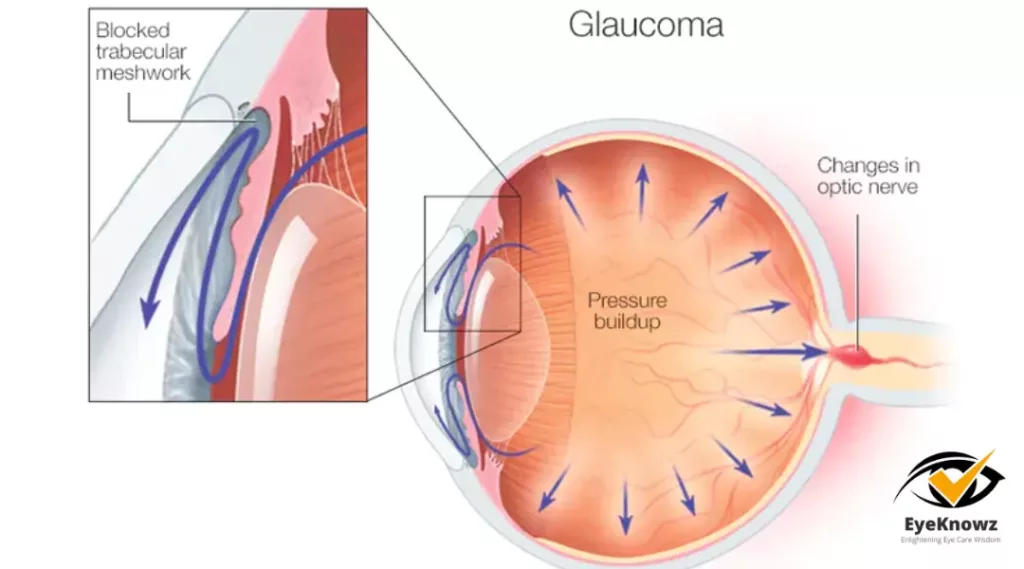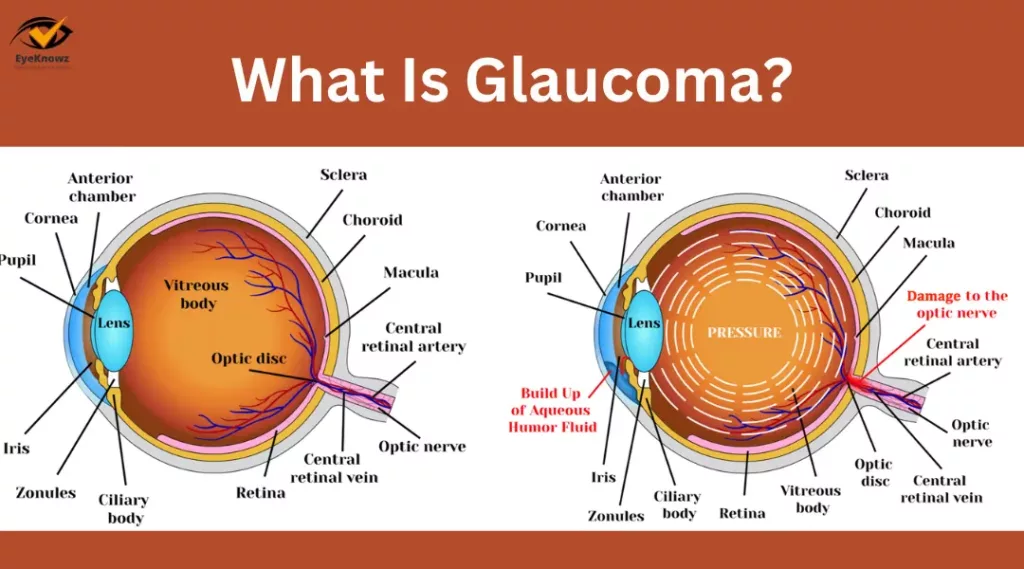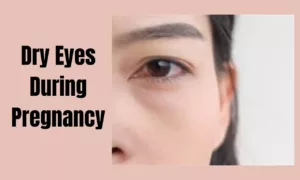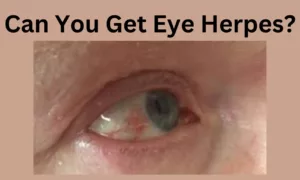Vision is a precious gift of nature to humankind that allows us to perceive the beauty of the world around us. However, we face various eye conditions and diseases in the long run of our lives that can threaten our visual clarity. One such condition is glaucoma. In this article, we will explore what glaucoma is, its causes, symptoms, types, diagnosis, and treatment options to comprehend this crucial condition for the safety of our vision.
What Is Glaucoma Of The Eye?
Glaucoma is an eye disease that gradually damages the optic nerve, which transmits visual information from the eye to the brain. The reason behind this damage is an increase in intraocular pressure (IOP), the pressure inside the eye. This elevated IOP can be responsible for optic nerve damage, resulting in vision loss.
The optic nerve is fabricated with millions of tiny nerve fibers. It seems like a bunch of countless small electric wires. As these nerve fibers crash, blind spots are displayed in the vision. However, these blind spots remain unnoticed until most optic nerve fibers expire.
Likewise, glaucoma is considered a progressive condition; if left untreated, it can result in complete blindness. This is taken as a primary cause of blindness for people over 60.
What Is The Cause Of Glaucoma?
Our eye continuously makes aqueous humor. As new aqueous flows into the eye, this same amount must be drained away. The fluid drains out through an area that is called the drainage angle. This constant process establishes pressure in the eye (called intraocular pressure or IOP). However, if this drainage angle starts working abnormally and the fluid remains steady. The pressure inside the eye begins to elevate and becomes responsible for damaging the optic nerve.
How Do We Get Glaucoma?
There are different types from congenital glaucoma to more. At the same time, we have discussed the two major types of glaucoma.
What Is Open Angle Glaucoma?

This is very common among aged people. It occurs gradually when the eye does not drain fluid well, and it becomes a blocked drain, resulting in elevated eye pressure that becomes the reason for damaging the optic nerve. This type of glaucoma is painless, and no changes in the vision might be observed initially.
Some people can have already sensitive optic nerves to normal eye pressure. Regular eye examinations are essential to find any signs of damage to the optic nerve.
What Is Narrow-Angle Glaucoma (Also Called “Closed-Angle Glaucoma” )?
This type of glaucoma occurs when your iris gets close to the drainage angle of the eye Additionally, you can finish it up by blocking the drainage angle. It looks like a piece of paper slipping over a sink drain. Moreover, with the complete blockage of the angle; the eye pressure elevates resulting in an acute attack. It must be taken as an eye emergency to visit your ophthalmologist immediately to prevent vision loss.
Below are signs of an acute angle-closure glaucoma attack:
- The vision suddenly started to blur.
- Severe eye pain
- Headache
- Stomachache (nausea)
- Throw up (vomit)
- Observing rainbow-colored rings or halos around lights
Angle-closure glaucoma develops gradually among many people. This is called chronic angle-closure glaucoma. It has no symptoms initially until the damage is on the edge of a severe condition. Angle-closure Glaucoma is the prime cause of blindness if not treated right away.
What Happens If We Get Glaucoma?
Open Angle Glaucoma Symptoms
Open-angle glaucoma has no alarm or warning signs in the first stages. As the disease gradually develops, blind spots grow in your peripheral (side) vision. Several people with open-angle glaucoma remain unnoticed with any change in their vision until the damage reaches severe stages. Hence, it is named as the “silent thief of sight.” And regular eye exams are the only solution to prevent any tragic situation. Your ophthalmologist can easily find this disease before you go into the dark.
Angle-Closure Glaucoma Symptoms
People affected by angle-closure glaucoma usually show no symptoms before an attack. Some early signs may be included, such as blurred vision, halos, mild headaches, or eye pain. People with these symptoms should never be too late to visit an ophthalmologist to save their eyes from any calamity of angle-closure glaucoma. Some other signs are also shown in the patient that are following.
- Severe pain in the eye or forehead
- Redness in the eye
- Reduced or blurred vision
- Observing rainbows or halos
- Headache
- Nausea
- Vomiting
Normal-Tension Glaucoma Symptoms
“Normal tension glaucoma” presents a normal eye pressure range. It has an array of symptoms that vary from blind spots while visualizing to damage of the optical nerve.
Who Is At Risk For Glaucoma?
Some people among us could be under fire more than usual for the risk of getting glaucoma. I must mention them.
- Over age 40
- Family history
- African, Hispanic, or Asian linkage
- Having high eye pressure and being farsighted or nearsighted
- I have had an eye injury
- Use medications for a long time
- Having thin corneas in the center
- Owning thin optic nerve
- Diabetic, migraines, high blood pressure, poor blood circulation, or affected with other health problems.
It is essential to talk with an ophthalmologist about the risk of getting glaucoma if someone has more than one of these risk factors.
Glaucoma Diagnosis
The only way to diagnose glaucoma is to complete an eye exam regularly. A glaucoma screening can only tell the whole story of whether the eye pressure is good enough or needs some treatment.
- Calculate your eye pressure
- Examine your eye’s drainage angle
- Check your optic nerve for damage
- Test your peripheral (side) vision
- Measure the thickness of your cornea
Can Glaucoma Be Stopped?
Glaucoma damage can never be stopped, even reversed. However, medications and surgery are helpful to prevent further damage. An ophthalmologist may use one or more of the following treatments.
Medication
Glaucoma is usually treated with eye drop medicine. Everyday use of eye drops can lower eye pressure and lessen the amount of aqueous fluid in the eye. Others decrease pressure by helping fluid flow through the drainage angle.
However, some eye drops may cause:
- Itching sensations
- Changes in your pulse and heartbeat
- Energy level variations
- Breathing problems)
- Dry mouth
- Blurred vision
- Eyelash growth
- Changes in the eye color and skin around the eyes or eyelid
Never change or stop taking your glaucoma medications without consultation with your ophthalmologist. Moreover, you must refill your medication stock before it is finished.
Laser Surgery
There are two main types of laser surgery for the treatment of glaucoma. It can be helpful for the aqueous drain from the eye.
All procedures can be done at an ophthalmologist’s clinic or an outpatient surgery centre.
Trabeculoplasty
This surgery is best for people who are affected by open-angle glaucoma and not more than able to use medications. In such cases, the eye surgeon uses a laser to make the drainage angle for better working. This way, fluid starts to flow out properly, and eye pressure is decreased.
Iridotomy
This type of surgery is suitable for people who have angle-closure glaucoma. The ophthalmologist uses a laser to build a tiny hole in the iris. This hole becomes helpful to flow the fluid to the drainage angle.
Conclusion
Thus, we have discussed the significant aspects of glaucoma, its types and causes, and the medications. Well, different types of glaucoma affect the eye in various aspects. Hence, it is imperative to understand the symptoms of the correct one and start your medication today, considering the doctor.
FAQ’s
What is congenital glaucoma?
Congenital glaucoma is one of the rarest types of condition, mostly found during or after birth. The condition is symptoms of intraocular pressure and abnormal eye development.
What is juvenile glaucoma?
It is another type of glaucoma primarily found in 40 below age groups. The juvenile causes damage to the optic nerve and results in vision loss.
What is usually the first sign of glaucoma?
In the initial stages, there is significantly less or no chance of glaucoma showing any symptoms. However, the first symptom is mostly the peripheral loss of vision.






